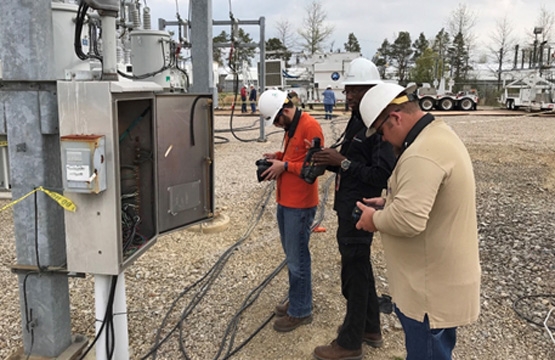

The topic of calibration and accuracy of measurement in infrared imaging systems is one that tends to stir debate when it inevitably comes up. Most trained thermographers understand the limitations of radiometric temperature measurement and have learned techniques to improve the reliability of the temperatures their cameras report. But many still aren’t sure how to check their accuracy in the field, or how often this should be done. Some thermographers or their facility mangers ignore the issue of calibration, or on the other end of the spectrum spend money to have an imager calibrated by the manufacturer without checking to see if it even needs it. Here are some easy methods to check your camera for reliable temperature measurement that can be done in the field utilizing equipment and supplies you have on hand.
Field calibration techniques can vary from quick and simple to complex. If you’re using your imager on a daily basis, you owe it to yourself and your customer (be they internal or external) to ensure that the temperatures you report are as close to reliable as you can make them. For measurement purposes, you should already know to use high emissivity targets when possible and to control background reflection as much as is feasible. Beyond your actual measurement technique, what else can you do?
A good basic technique, one we teach in our Level I Basic Thermographic Applications course and that takes a minimal amount of time, is the Tear Duct/Functionality Test. Mind you, you’d want to perform this on a person in a room with a moderate ambient temperature, as opposed to outside in cold weather or in a warm ambient setting like near a furnace or in a boiler room. Human skin is one of the most emissive materials that we see regularly, with a value of .98. This means that of the photons measured from human skin, 98% of them are representative of the actual surface temperature, and 2% are reflected from something else. We can measure the temperature of someone’s skin in a spot that should be steady under normal conditions, and check our camera’s reliability. The technique is simple. Set the emissivity correction factor in your camera to .98, stand approximately 3 feet (1 meter) from your subject, focus your image, and place your measurement tool (crosshair, box, circle) on the tear duct. Typical accuracy specifications for imagers is +/- 2 degrees C or 2%, whichever is greater. On a person’s tear duct, you should measure somewhere between 94°-97°F (34°-37°C). If you’re off by more than the aforementioned allowable variance check your camera settings. If you do this before you do your inspection work, and then again after, you can be relatively sure that any measurements you took between tear duct checks are reliable, assuming your technique was good.
The tear duct check is good for day to day, but its limitation is that we’re only taking a look at one small slice of the camera’s measurement capability. It’s possible of course to be very accurate at one temperature and off on another one that is 50 or 100 degrees warmer or cooler. So, for a good periodic check, say monthly, one possibility is to check your camera on a blackbody calibrator. Blackbody calibrators are what the camera manufacturers use to calibrate imagers after they’re manufactured, as well as when you send them in. A blackbody calibration source can be the National Institute of Standards and Technology (NIST) reference standard. It is advisable when using a blackbody replicator to test your imager for at least three different temperature setpoints, for example, 50°, 100° and 150° C. Your accuracy should be +/- 2%, or +/- 2° C whichever is greater. There are standards that apply to this type of check, so if you plan to use this technique you want to make sure to follow them. Keep a log of results as well, so if your camera starts to “slip” you’ll notice.
Blackbody replicators are not cheap though. They can range in price from $1,000-25,000 depending on the model. So unless your facility has more than a couple of cameras, this might be cost prohibitive for you. But you have options available, as said before using materials you have on hand. For low temperature measurement, you can use an ice bath as a temperature reference. There’s an ASTM standard for this method, it’s ASTM E563-11. This method is also approved for thermocouple calibration and is pretty widely used. Couple your ice bath with a sample of boiling water (taking care to not allow the steam to affect your measurements), and you have two pretty wide setpoints to use to gauge your temperature measurement reliability. Of course, you want to make sure to use correct measurement techniques in each case; perpendicular vantage point, emissivity at .98 (for water) and a known or controlled background.
It’s important to note that if your measurements are inaccurate for any of these techniques that you should check your camera settings and re-measure. If your measurements are off by more than the tolerances mentioned above, it might be time to bite the bullet and send your camera in.